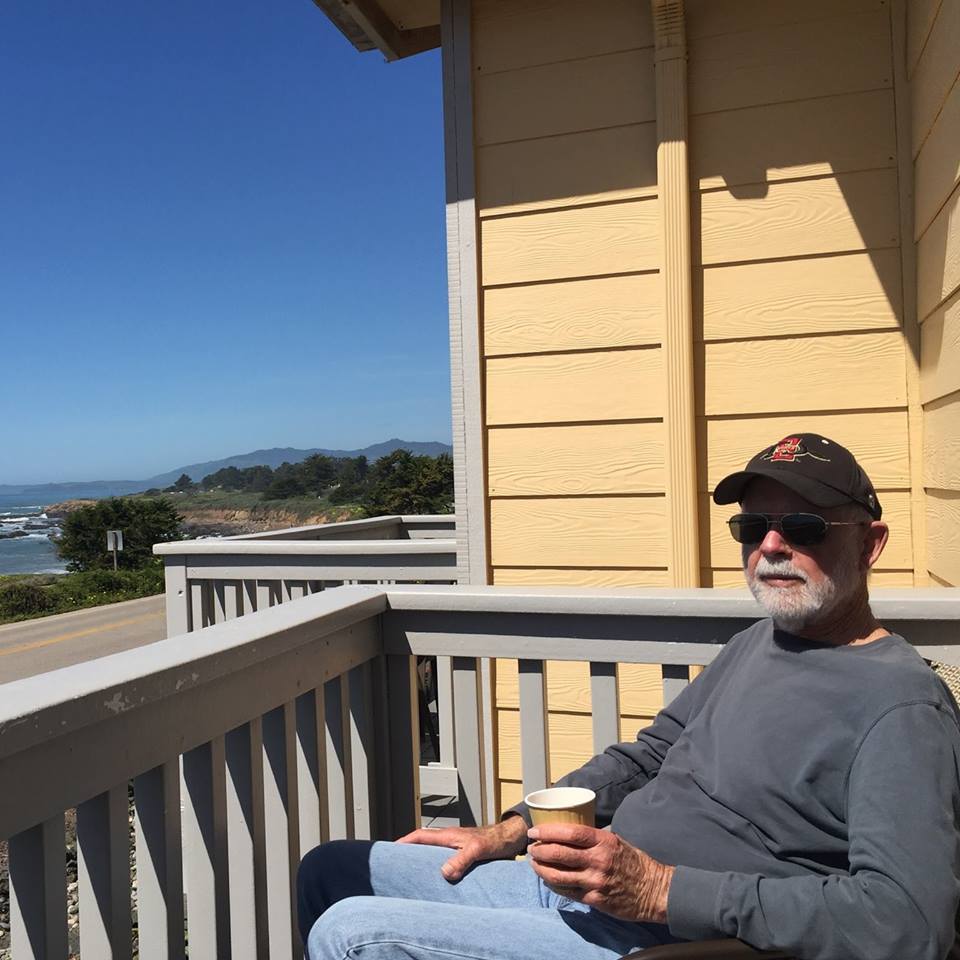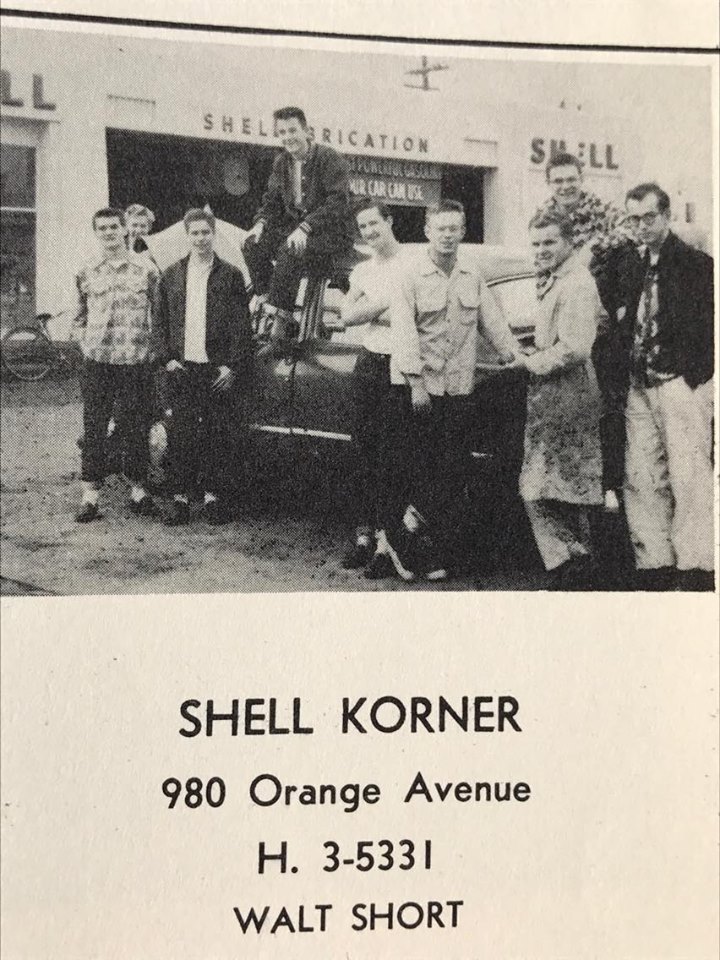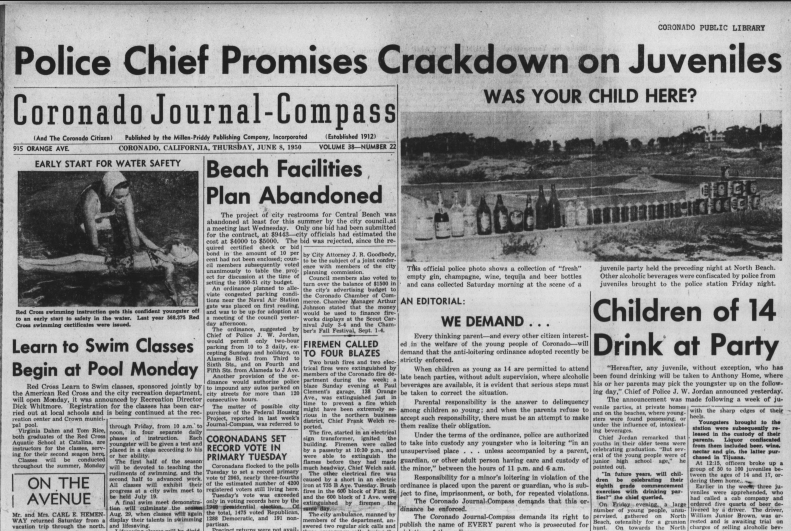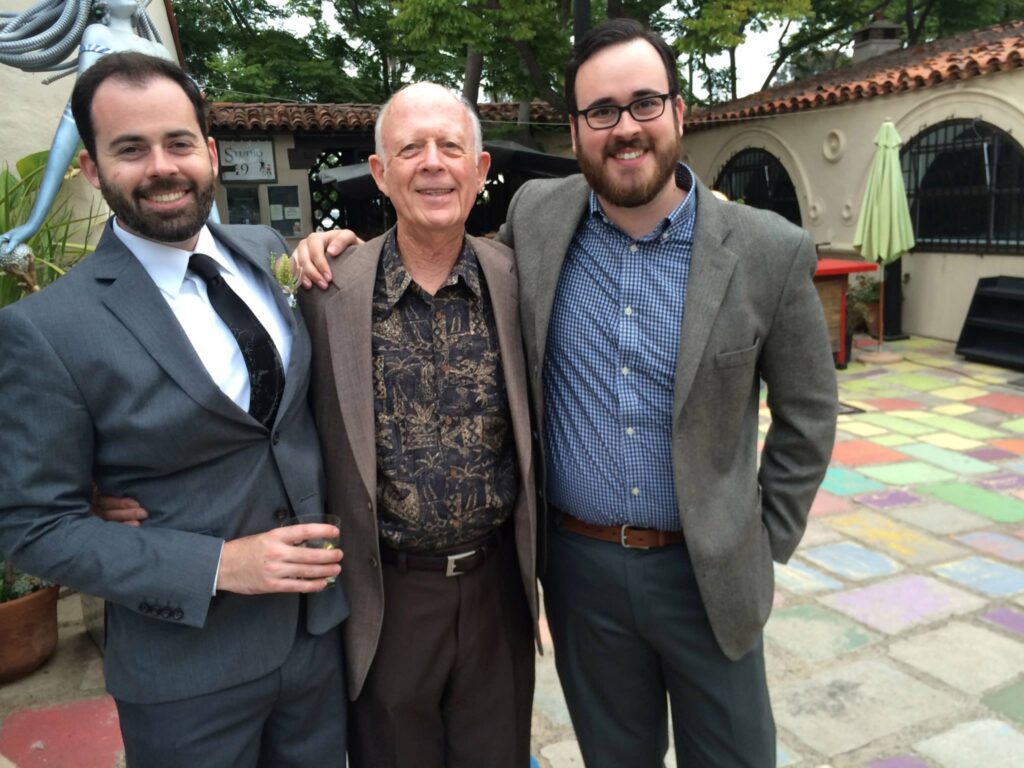
Coronado resident, Gordon Dudley, remembers fondly being a student in Coronado before, during, and after he attended Central Elementary School (where Village Elementary is today) and graduated from Coronado High School (CHS) in 1952. After graduation, Gordon lived in National City in housing similar to the lower-income housing where Tidelands Park is today. Gordon went on to become a Professor of Biology. Enjoying retirement now, Gordon enjoys Coronado life with his two dogs and many friends, both old and new. His life now may be serene, but his high school days were full of adventure and mischief.

Jumping the Border Wall
People surreptitiously crossing the border – Gordon’s done it, and done it many times. He and his fellow classmates used to do it every time their CHS classmates were having a party.
Gordon explained that before a big party, he and his buddies, known as the Natural Seven, would take orders from classmates as to what liquor they wanted for the party: “We would get a grocery list for the run to T.J. (Tijuana), and gather-up paper grocery bags. Someone wanted Oso Negro Gin, some wanted tequila.
Then they would get in his buddy Pat’s 1940 Plymouth and drive through the United States–Mexico border at San Ysidro. Gordon said, “Willy (another member of the Natural Seven) and I would drive to T.J.,… there was never carding at the bars or liquor stores. You could buy anything. It was heady stuff; at the bars, prostitutes would proposition you.”
From Tijuana, they’d drive “to the border fence that was across a narrow road from a Mexican graveyard at Border Field.” After they stopped, a few of the guys with the bags of liquor would hop out of the car. Then they would jump over the four-foot wood fence near a gate secured with a padlock. Dairy Mart Road was on the other side of the fence. There they would sit and wait the thirty minutes until the driver and friends got through customs, drove to the spot on Dairy Mart Road and picked them up.
One time, a United States sheriff, seeing their shenanigans, pulled alongside the car. Gordon assumes the sheriff thought they were Mexican nationals; but when saw a bunch of white kids, the sheriff just waved them on.
Back at home, everyone would pay them back for the purchases. Gordon said they never made a profit, just got reimbursed.

Gordon’s son found this 1950 Coronado Journal-Compass front page: “Police Chief Promises to Crack Down on Juvenile Drinking. WAS YOUR CHILD HERE? Children of 14 Drink at a Party” Gordon was one of those rascal fourteen-year-olds.
Fathers at War
Going to school in Coronado during WWII had an impact on the island life of the children. While Gordon’s dad was a manager at a bowling alley, many of his friends were Navy kids. Gordon explained, “Dads were gone nine months or more, a year at a time. Moms had to take care of multiple kids.”
The Natural Seven were a group of friends that formed during their elementary school years at Central Elementary. The friendships developed as they entered Junior High and High School. The group gradually grew in number, with a reputation for being the “bad kids – but also the guys to hang around with.” As they entered high school, their “gang” expanded to around 12 to 15. Despite their reputation at school, Gordon assured me they were all good, compassionate young men. Gordon remembered that their friend Dave had petit mal, and was instinctively watched out for by the guys. Gordon explained, “We had to ride our bikes at either side, to protect him, in case he had a seizure on the way to school.“
Hunting at the Tijuana Slough
Using 22s and shot guns, Gordon joined a friend and the friend’s dad for bird hunting at the Tijuana Slough. They used 22s and shot guns to nab their prey. It was just sport for Gordon, but for the father and son, the hunting was a necessity. Once the herons and other birds were collected and brought back to their Coronado home, the friend’s Louisiana-born mother cooked a massive bird stew for dinner.
Gordon noted that this friend’s house was a front house on a double lot. It was the only double lot he could remember. All the other Coronado homes had single homes with big lawns in the back.
Real Estate Values Drop After the Bombing of Pearl Harbor and Subsequent “Red Alert” issued for San Diego
On December 7, 1941, the day the Japanese bombed Pearl Harbor, Gordon was in second grade. He lived on the 100 block of I Avenue, near the bay. Gordon noted “few homes on the bay side of First, so we had a clear view of San Diego when we went to play there.” Gordon explained that after the Japanese bombed Pearl Harbor, real estate got very cheap in Coronado.
Then in February of 1942, the military issued a Red Alert for Los Angeles and eventually San Diego. On one particular night, the military believed Japanese planes were flying south of Los Angeles. In response, a U.S. military airplane fired at the possible Japanese planes for 30 minutes. While there is debate over what really was in the southern California skies that night, the fact is that San Diego went on Red Alert and many military husbands were worried for the safely of their wives and children. The wives and children soon left Coronado, and moved back to be with their families in the Midwest, and the real estate market crashed. You can read more about this event in “San Diego goes on Red Alert in February of 1942.”
Gordon said that right after WWII ended in 1945, Coronado Real Estate prices dropped again. Resident servicemen and their families were discharged and went back to Kansas, Kentucky, and other points east. Gordon explained that his parents bought their A Avenue house at a price that allowed them to pay off the mortgage in nine years on a working-man’s wages. To those house hunting in the late 1940s, Coronado was affordable.
Real Estate Values and the Bridge
Gordon believes that the building of the San Diego-Coronado Bridge was the beginning of Coronado real estate prices soaring.
He remembered that before the Bridge, Coronado wasn’t really a desirable place to live. It was a hassle to get to Coronado. It was a hassle to leave Coronado. The traffic to get on the San Diego bound ferry could back up to Fourth Street, and oftentimes you wouldn’t get on the next available ferry. It would be full with commuters and you’d have to take the next one, or the next.
Coming back to Coronado could be a larger inconvenience. If you missed a ferry, especially in the evening, it could be hours before the next one came.
Border wall hopping, hunting, and purchasing affordable Coronado Real Estate – all adventures of the past, but relived with a conversation with Gordon. Gordon is a wealth of information about Coronado history and when he puts his Biology Professor hat on, an expert on the flora and fauna of San Diego County.





